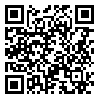Volume 17, Issue 2 (4-2013)
IBJ 2013, 17(2): 93-100 |
Back to browse issues page
Monireh Mani 
 , Taghi Golmohammadi
, Taghi Golmohammadi 
 , Shahnaz Khaghani
, Shahnaz Khaghani 
 , Zahra Zamani
, Zahra Zamani 
 , Kayhan Azadmanesh
, Kayhan Azadmanesh 
 , Reza Meshkani
, Reza Meshkani 
 , Parvin Pasalar
, Parvin Pasalar 


 , Taghi Golmohammadi
, Taghi Golmohammadi 
 , Shahnaz Khaghani
, Shahnaz Khaghani 
 , Zahra Zamani
, Zahra Zamani 
 , Kayhan Azadmanesh
, Kayhan Azadmanesh 
 , Reza Meshkani
, Reza Meshkani 
 , Parvin Pasalar
, Parvin Pasalar 

Abstract:
Background: Elevated level of plasma homocysteine has been related to various diseases. Patients with hyperhomocysteinemia can develop hepatic steatosis and fibrosis. We hypothesized that oxidative stress induced by homocysteine might play an important role in pathogenesis of liver injury. Also, the cellular response designed to combat oxidative stress is primarily controlled by the transcription factor Nrf2, a principal inducer of anti-oxidant and phase II-related genes. Methods: HepG2 cells were treated with homocysteine in different time periods. Glutathione content was measured by flowcytometry. Using electrophoretic mobility shift assay (EMSA) and Western-blotting, anti-oxidant response element (ARE)-binding activity of Nrf2 for heme ocygenase-1 (HO-1) was demonstrated. Real time RT-PCR and Western-blotting were performed to evaluate whether homocysteine was able to induce mRNA and protein expression of HO-1. Results: The role of Nrf2 in cellular response to homocysteine is substantiated by the following observations in HepG2 cells exposed to homocysteine (i) Western-blotting revealed that Nrf2 is strongly stabilized and became detectable in nuclear extracts. (ii) EMSA demonstrated increased binding of Nrf2 to oligomers containing HO-1 promoter-specific ARE-binding site. (iii) Real time RT-PCR and Western-blotting revealed increased mRNA and protein expression of inducible gene HO-1 after treatment with homocysteine. Conclusion: Data presented in the current study provide direct evidence that the immediate cellular response to oxidative stress provoked by homocysteine is orchestrated mainly by the Nrf2-ARE pathway. Therefore, induction of Nrf2-ARE-dependent expression of HO-1 could be a therapeutic option for hepatic cells damage induced by homocysteine.
Type of Study: Full Length/Original Article |
Subject:
Related Fields
| Rights and permissions | |
 |
This work is licensed under a Creative Commons Attribution-NonCommercial 4.0 International License. |



